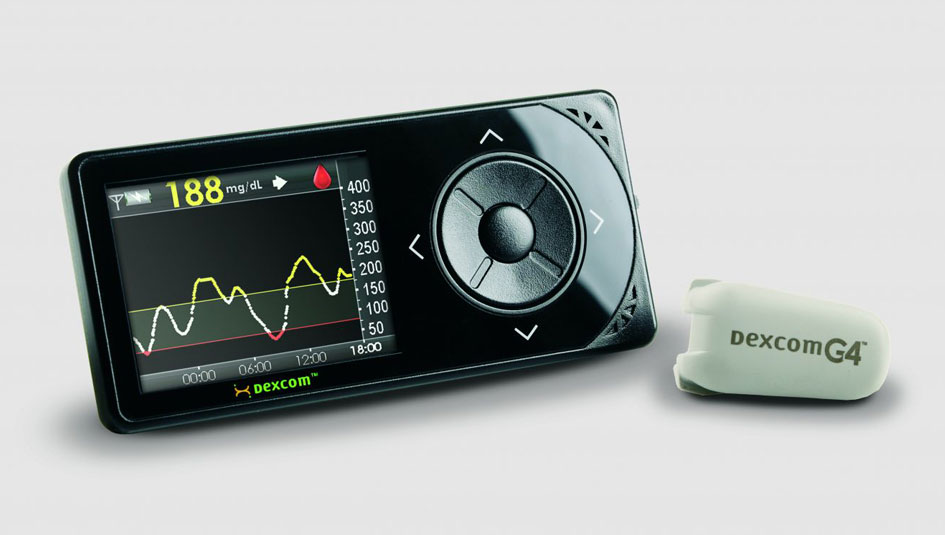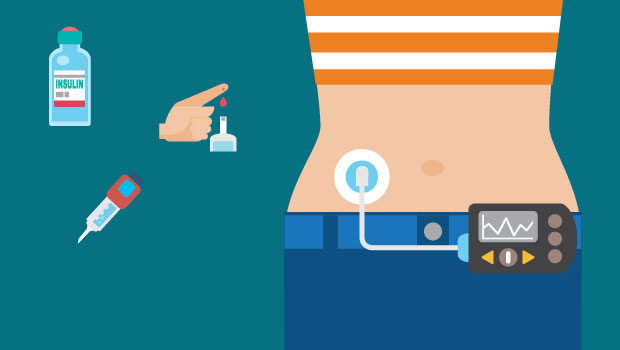3 Reasons Why I Wear a CGM

For me, the continuous glucose monitor (CGM)has been the single biggest innovation in diabetes management since synthetically produced insulin. Life with Type 1 diabetes revolves around numbers, and I find the way the numbers work together constantly changes. One day 1 + 1 = 2, the next 1 + 1 = 3. So many factors affect my levels that the numbers alone aren’t enough – understanding the trends makes all the difference.
I started using a CGM in 2009 after my doctor (who also had diabetes) recommended it. For those of you not familiar, CGMs are systems that have a transmitter with a sensor attached to your body and a receiver where you can monitor blood sugar trends plotted by readings taken every 5 minutes. CGMs not only connect the dots to provide a constant view of your blood sugars, but they also monitor the rate at which your blood sugar level is rising or falling. An alarm can be set for when you are outside the lines of your “good” blood sugar levels.
There are several reasons why my CGM has become an essential tool for improving my diabetes management:
A hectic schedule
Type 1 diabetes responds much better when you have a stable, predictable schedule. My schedule and life has been anything but stable or predictable.
In the last 15 years, I’ve lived in 3 different cities, traveled almost half a million miles, worked a more-than-full-time job and taught fitness classes in my spare time. Until recently, a typical day for me was waking up at 5 a.m., teaching a spin class, heading to work (when not flying to it), meeting friends for a late dinner, going to bed at 11 p.m. and waking up to do it all over again.
The CGM helped me track my blood sugar levels at times when I would have been too busy to crunch the numbers to look for a pattern.
Exercise
Recently I decided to make a life change and teach spin classes full time. Teaching 13 classes a week requires me to be at my top level of physical and mental performance as an athlete and coach, and it ultimately requires an almost-perfect blood sugar scenario. Exercise allows for better utilization of my insulin, but the adrenaline my body produces increases my sugars. Having my CGM during my rides allows me to make minor adjustments to my basal rates or bolus during classes, as needed, to prevent lows or highs.
Living alone
Living by myself in New York City, I find my CGM provides me with an additional layer of safety and support. I’m a tough chick, but toughness doesn’t matter when you wake up at three in the morning covered in sweat, feeling shaky and disoriented with a 39 mg/L blood sugar. With a CGM, these dangerous nighttime lows are few and far between. That’s because it sounds the alarm to wake me up before I get to dangerous levels. This is especially important because I’ve found that as I move towards tighter control of my blood glucose levels, I feel lows less than before.
Don’t get me wrong, CGMs are not perfect. Along with the insulin pump, my CGM makes me feel like a robot. I’ve tried multiple systems in multiple iterations. Also, at any given time I’m carrying my cell phone, insulin pump, and CGM, which can be overwhelming. And I may have dropped my monitor in the toilet. 3 times. So there’s that.
But in the end my CGM has allowed me to live the life I want to live, on the schedule I want to follow, doing the activities that I want to do, all while staying between the lines. By being tethered to another device, I feel less tethered to my diabetes.
Thanks for reading this Insulin Nation article. Want more Type 1 news? Subscribe here.
Have Type 2 diabetes or know someone who does? Try Type 2 Nation, our sister publication.







